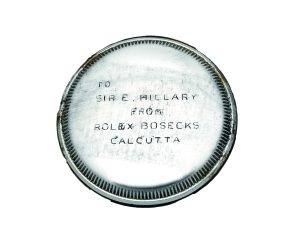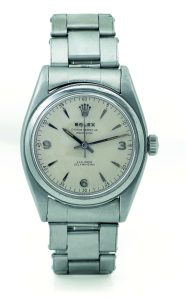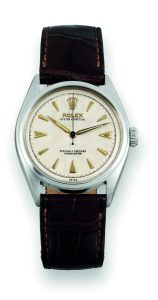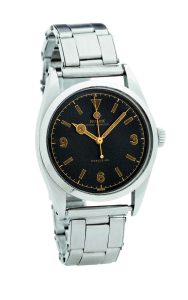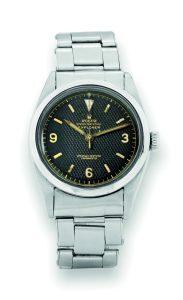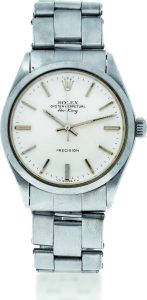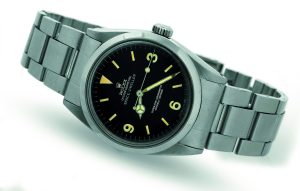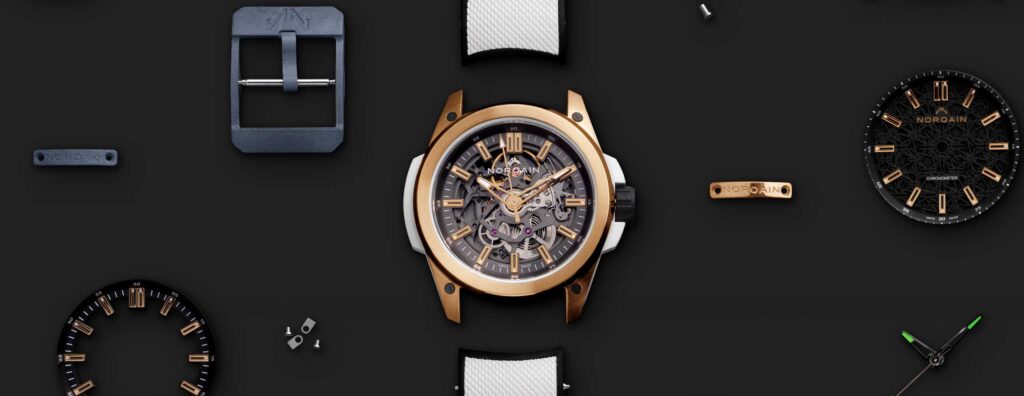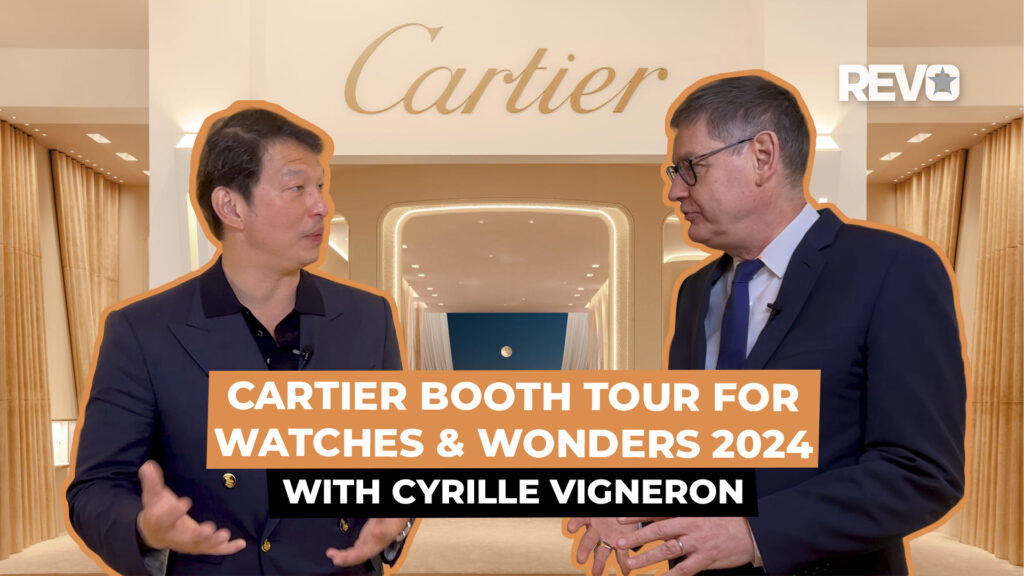Rolex
Dossier: Rolex Explorer
Rolex
Dossier: Rolex Explorer
The Rolex Explorer, through the decades
It was a case of shock and awe on the Rolex stand at 2010’s BaselWorld when the brand announced that the beloved Explorer model had been revamped. In typical Rolex style, however, the upgrade was nothing too radical: it merely involved an increase in case size from 36mm to 39mm — and many believe it to have been a change that was long overdue.
The Explorer hasn’t altered much since the introduction of the reference 14270 two decades ago, and it was beginning to look more like a schoolboy’s watch than a timepiece designed for rugged adventurers. But the extra 3mm diameter of the new reference 214270 has made all the difference. Rolex has been sensible not to mess with the classic styling and with the subtle upsize, the company has deftly created what must once again be considered one of the coolest retro-look watches on the market.
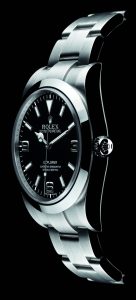
Now in a 39mm case, the extra 3mm diameter of the reference 214270 makes the Explorer look more like the rugged adventurer’s watch that it’s always been. It replaces the (Below) ‘Black Out’ Explorer ref. 14270, circa 1990, with 36mm case.
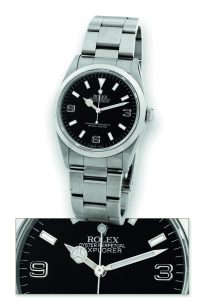 Such is the simplicity of the model that it has always been absurdly robust and reliable, but now there is little point in going the vintage route since a brand new Explorer can be had for about the same price as an old one will make at auction, yet you get a Parachrom hairspring and Paraflex shock absorbers into the bargain with the 2010 version.
Such is the simplicity of the model that it has always been absurdly robust and reliable, but now there is little point in going the vintage route since a brand new Explorer can be had for about the same price as an old one will make at auction, yet you get a Parachrom hairspring and Paraflex shock absorbers into the bargain with the 2010 version.
Perversely, of course, the prices for the old, small-cased versions are now slightly on the rise after spending a considerable time in the auction-room doldrums. The renewed interest is down to the fact that it is now difficult to obtain an unused 36mm version.
The Everest Rolexes
Although vintage Explorers rarely make it into five-figure territory (Jurassic Park creator, the late Michael Crichton’s fetched $10,200 at auction in May), a particularly special example of the reference 6098 from which the model evolved might well have sold for $20,000-plus by the time you read this.
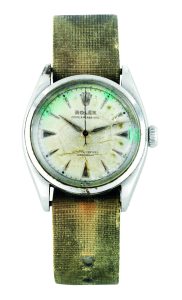
1953 reference 6084 that was presented to Sir Edmund Hillary after his descent from the summit of Everest. (Below) Its engraved caseback.
The watch in question was among the lots at Antiquorum’s recent Geneva sale and belonged to Alfred Gregory, the official photographer on the historic expedition of 29 May 1953, when Sir Edmund Hillary and Sherpa Tenzing Norgay became the first people to reach the south summit of Everest.
Hillary’s Everest expedition and the Rolex Explorer are, of course, inextricably linked. According to Rolex, Hillary and Tenzing were equipped with versions of the reference 6084 “Oyster” waterproof model, which had been an adventurer’s favourite since the 1930s. Yet, although it is known that Tenzing was wearing his Rolex when he reached the summit, there is some doubt that Hillary was wearing his, as the team had also been supplied with watches by the English maker Smiths. Some anoraks — sorry, “enthusiasts” — even believe that Hillary was wearing both watches at the crucial moment.
To add to the confusion, Rolex is thought to have also provided Hillary with a reference 6098 white-dialled watch, which he reported to be unsuitable as it was too susceptible to glare. Gregory’s watch, which was offered for sale by a member of his family, was believed to have been the last watch actually worn on the expedition to still have been in private hands.
The auction also included a selection of Rolex watches that belonged to Hillary, including a 1953 reference 6084 that was presented to him after his descent from the summit. He subsequently wore the watch during the Trans-Antarctic Expedition via the South Pole in 1958.
Early-Gen Explorers
Not long after Hillary and company returned from Everest, Rolex launched the so-called “Pre-Explorer” (ref. 6150) followed by the 6350 in late 1953 — the first Rolex to carry the word “Explorer” on the dial, which occasionally had a rare “honeycomb” texture. The 6150 models are relatively rare and were not made to a uniform design, some being standard Oyster Perpetual models which were probably very similar to the Everest watches. The 6350, meanwhile, incorporated a special lubricant that enabled the watch to function at temperatures between -20 degrees centigrade and +40 degrees.
The more familiar Explorer pattern — the ref. 5504 — appeared in around 1957, featuring a stainless-steel, 36mm case containing a black dial with highly luminous “Mercedes” hands and hour markers designed to ensure the watch would be readable in the sort of dark and gloomy conditions explorers often find themselves in. Chronometer-certified and water resistant to a relatively modest 50 metres, the watch represents the quintessential example of what Rolex does best — that is, to make simple, robust, reliable wristwatches with no frills attached, that continue to run and run no matter what the wearer throws at them.
The reference 1016 Explorer, the most commonly found version, remained in production from 1963 until 1989 and was, consequently, made in massive numbers. They have come to be regarded as “entry-level” Rolex wristwatches and are ubiquitous in the world’s auction houses where they invariably sell for around $3,000 upwards — although clued-up collectors now pay quite large sums for rare variants of the watch, such as the ref. 6610 with “red depth indication”, which has the water-resistance level printed in red instead of white, and so-called “colour-change-dial” models made during the 1960s in which a chemical reaction caused the black dial to change to a uniform, chocolate brown.
Other variations on the Explorer theme include so-called “dress” models such as the “Explorer Date” (ref. 5700), the “Air King” (5500) which usually has a pale copper-coloured dial, and the Space-Dweller (1016) which was introduced to the Japanese market in 1963, shortly after a visit by the Mercury astronauts, men considered, at the time, as the “ultimate explorers”.
The Rolex Explorer Has Experienced Numerous Variations Over The Years. Here Are Some Of Its More Outstanding Predecessors, Successors And Variants.
1. Rolex ref. 6084 with honeycomb dial, circa 1951
2. Rolex ref. 6150 ‘Pre-Explorer’, circa 1953
3. Rolex Explorer ref. 6098, circa 1953
4. Rolex Explorer ref. 6350 with honeycomb dial, circa 1953
5. Rolex ref. 5504 ‘Everest’, circa 1959
6. Rolex ‘Space-Dweller’ ref. 1016, circa 1963
7. Rolex ref. 5500 ‘Air King’, circa 1972
8. Rolex ‘Black Out’ Explorer ref. 14270, circa 1990
Excerpted from an article by Simon de Burton in REVOLUTION’s archives. All vintage Rolex timepieces courtesy of Antiquorum. All other images courtesy of Rolex.




